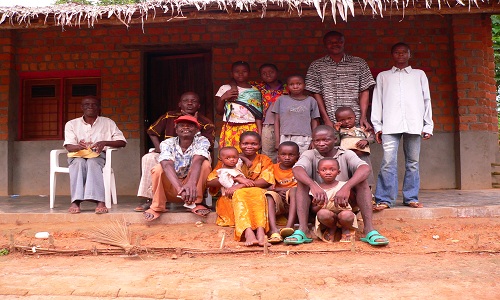40,063 total views, 2 views today
Meaning and Differences between Kinship and Descent System
Kinship System is the biological relationship that determines who one’s relatives are and one’s relationship with them. This system is an important part of man’s life. Kinship system includes people one is related with through descent or marriage. Descent system is one of the terms related to kinship system. Descent bind people of the same lineage together.
Types, Forms, and Categories of Descent System
There are many categories of descent system. They are the Unilineal, Bilateral and Ambilineal descent system. Bilateral descent system is also called bilineal or double descent systems.
More than one descent systems are practiced in Nigeria. Different cultures have their own way of affiliating themselves to their kinship ties. The interesting thing is that all the types of descent system are being practiced by Nigerians. Despite the differences in kinship ties across the country, they are all similar in their course of tracing connection through the parent-child ties. (Culture and Its Characteristics)
1. The Unilineal descent system
The Unilineal descent system could either be Patrilineal or Matrilineal decent system.
-
Patrilineal Descent System
This descent system, also known as the “agnatic” descent system is the most common descent system that traces an individual to the father’s side or lineage. Authority and economic survival are vested on the men. The household in this type of society is male-headed which is also known as the patriarchal household. Both the male and the female children belong to their father’s lineage or kin and not the mother’s. This is why the children bear their father’s name, inherits from their father side and have all the entitlements attached to their father’s lineage. The residence is patrilocal, in patrilocal residency, the man with his immediate family members lives in his father’s house. This system is found among the Yoruba and most Igbo people of Nigeria. (Naming of Children In Yoruba Culture of Nigeria)
-
Matrilineal Descent System
This system is also known as “uxorial” descent system. This type of descent system is not as common as the patrilineal descent system. The children are traced to their mother’s lineage. The means of survival is carried out mostly by the women. This system is not the direct opposite of the patrilineal system in terms of authority. The authority is vested on the men but the economic means of survival is by the women. The maternal uncle( brother of the mother) holds a vital role in social responsibilities and inheritance. He is the social father and has a stronger relationship with his sister’s children than the biological father of these children.
The children pay more respect to their social father(maternal uncle) than to their biological father. The children born into such society inherits directly from their mother’s side, which is mostly from their maternal uncle. Here, the king’s biological son does not inherit the kingship from his father but instead, the king transfers his kingdom, title, and status to his sister’s son. The residence is matrilocal as the male child marries and lives in his mother’s house or matrilineal descent. Some parts of the Eastern Igbo in Abia state practice matrilineal descent system. (Ancient Sacrifices and Rituals In Nigerian Culture)
2. Bilateral, Bilineal or Double Descent System
This system is two-sided because an individual can be traced to, inherit from, and connected to both the father’s and mother’s side. There is a simultaneous affiliation to both sides. Usually, the landed and immovable properties such as the trees, forests, farm products are inherited through the male side while the movable properties and livestock are inherited matrilineally. This is common among the Yako people of Cross River State in Nigeria.
3. Ambilineal Descent System
This system is the combination of both the Patrilineal and Matrilineal descent systems. An individual can be traced to either of the two but he or she may select only one line to be traced to. The reason for choosing one side over the other has to do with the importance or benefits attached to each line. This system is flexible. A family can be patrilineal for a period of time and matrilineal in the next generation. For instance, a man that marries a woman from a political or rich family can allow his children to be identified with their mother’s family line. (Read an interesting article on Gender Inequality Embedded In Nigerian Culture here)
Importance, Benefits, and Advantages of the Kinship system
Descent or kinship system bind people together and defines social unity. Family members get support from the members of the people they are related to. The training of a child is done mostly by the people he or she is affiliated with. Kinship system regulates sexual relationship as it controls incest. Finally, the residence, membership, and citizenship of am individual are defined by the kinship system.
Now you know the systems and ways of tracing kinship and descent systems
If you find this Article interesting, please “Like” and “Share” it on Facebook and Twitter by clicking the buttons below. Also, don’t forget to drop a comment. Thanks

Thanks a lot with is explanation I have been able to understand more on the subject matter